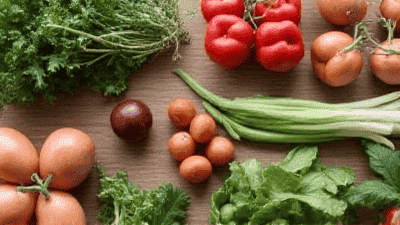
In today's globalized economy, the way we source our food has shifted considerably. With the convenience of supermarket chains, it is easy to overlook the importance of where our food comes from. However, an increasing number of consumers are recognizing the value of supporting local farms and choosing local ingredients. This shift not only contributes to better health but also has a positive impact on communities, the environment, and the economy.
The local food movement emphasizes the consumption of food produced within a specific region. This movement often focuses on supporting small-scale, family-owned farms, farmers' markets, and community-supported agriculture (CSA) programs. The goal is to connect consumers more directly with their food sources, fostering a greater appreciation for the origins of what they eat.
In recent years, there has been a noticeable surge in interest in local foods. Various factors contribute to this trend, including:
Health Awareness: Many consumers are becoming more health-conscious and recognizing that fresh, seasonal ingredients can provide superior nutritional benefits.
Environmental Concerns: Growing awareness of environmental issues has prompted many to consider the carbon footprint of their food choices, leading to a preference for locally sourced ingredients with lower transportation emissions.
Community Building: People want to support their local economies and foster community connections, driving interest in local farms and food producers.

One of the key advantages of choosing local ingredients is the enhanced freshness and flavor. Local produce is typically harvested at its peak ripeness and delivered to consumers quickly, resulting in:
Local foods tend to be more nutritious than their mass-produced counterparts. This is due to:
Shortened Time from Farm to Table: Reduced time between harvest and consumption ensures that the food retains more of its nutrients, which can degrade over time.
Seasonal Eating: Eating locally often means consuming seasonal foods, which are not only fresher but also packed with the nutrients your body needs at specific times of the year. For example, winter root vegetables provide hearty nourishment, while summer fruits offer hydration and vitamins.
Choosing local ingredients contributes to environmental sustainability in multiple ways:
Reduced Carbon Footprint: When foods are sourced locally, they require less transportation, leading to lower greenhouse gas emissions associated with food miles.
Preservation of Green Spaces: Supporting local farms helps maintain agricultural lands, preserving natural landscapes and biodiversity rather than allowing for sprawling urban development.
Sustainable Farming Practices: Many local farms prioritize sustainable farming methods, which can include organic practices and responsible resource management.
Purchasing local ingredients directly contributes to the well-being of your community:
Job Creation: Supporting local farms means investing in local jobs. Small farms tend to employ local workers, stimulating the economy.
Strengthening Small Businesses: Money spent on local food stays within the community, helping small farmers thrive and encouraging entrepreneurship.
Encouraging Diversity in Agriculture: By supporting a variety of local farms, you help sustain diverse agricultural practices and protect against the negative effects of monoculture farming.
Choosing local ingredients fosters a sense of community and connection:
Knowing Your Food Sources: By visiting local farms or farmers' markets, you have the opportunity to meet the people who grow your food. This connection enhances your appreciation for the efforts involved in food production.
Educational Opportunities: Local farms often offer tours, workshops, and educational programs to teach about sustainable agriculture, nutrition, and food preparation.
Building Relationships: Establishing connections with local farmers fosters trust and transparency in food sourcing.
Farmers' markets are an excellent way to access fresh, local produce and support local farms. Here are tips for making the most of your visit:
Do Your Research: Find out when and where farmers' markets are held in your area. Many communities provide directories with information on local markets.
Go Early: Arriving early ensures you have the best selection. Popular items may sell out quickly, so it is best to get there ahead of time.
Engage with Farmers: Take the opportunity to talk with the farmers about their products, growing practices, and the seasonality of their crops.
Joining a CSA allows you to receive a regular share of fresh produce directly from a local farm. Benefits include:
Supporting Local Agriculture: Your upfront payment helps farmers cover their expenses during the growing season.
Fresh, Seasonal Produce: You receive a weekly or bi-weekly selection of in-season produce, which encourages seasonal eating and variety in your diet.
Learning Opportunities: Many CSAs provide newsletters or workshops on cooking with seasonal ingredients and sustainable practices.
Not all grocery stores focus exclusively on national brands. Many offer local sections featuring products sourced from nearby farms. Consider the following:
Buy Local Produce: When shopping, look for labels indicating that the items were grown locally. Many stores have dedicated sections for local produce.
Explore Local Products: Beyond fresh produce, consider local products like honey, dairy, meat, and baked goods. Supporting these products helps local artisans and small businesses.
If you have the space, consider growing your own vegetables and herbs. This not only connects you to your food but allows you to enjoy fresh ingredients at their peak. Here are some starting ideas:
Container Gardening: If space is limited, container gardening allows you to grow herbs, tomatoes, and other small plants.
Community Gardens: Participate in or start a community garden where neighbors can collaborate and share the harvest.
Understanding the benefits of local ingredients allows you to make informed decisions. Consider these educational opportunities:
Workshops and Classes: Participate in cooking classes that focus on local ingredients or preserving food.
Online Resources: Learn about local farming practices and sustainable eating through blogs, documentaries, and social media.
Share Your Knowledge: Talk with friends and family about the benefits of eating local, encouraging them to make similar choices.

Incorporating local ingredients into your meals creates delicious and healthy dishes. Here are a few seasonal recipes that spotlight local produce.
This colorful dish highlights seasonal vegetables and can be customized based on what you find at the market.
This salad celebrates fresh greens and seasonal produce, perfect for showcasing local ingredients.
This comforting soup makes use of plentiful local vegetables, creating a nutritious and hearty dish.
A delightful dessert that showcases seasonal berries—perfect for a summer treat.
This simple recipe utilizes fresh herbs to create a flavorful oil perfect for drizzling on salads or bread.
Choosing local ingredients not only enhances the quality of your diet but also contributes to a healthier community and planet. By embracing the local food movement, you can enjoy fresh, flavorful produce while supporting farmers and sustainable agricultural practices.
From the benefits of improved freshness and flavor to the positive environmental impact, the case for supporting local farms is compelling. As you embark on this journey, remember that every small action counts. By visiting farmers' markets, joining a CSA, growing your own food, and cooking with seasonal ingredients, you become an active participant in the local food system.